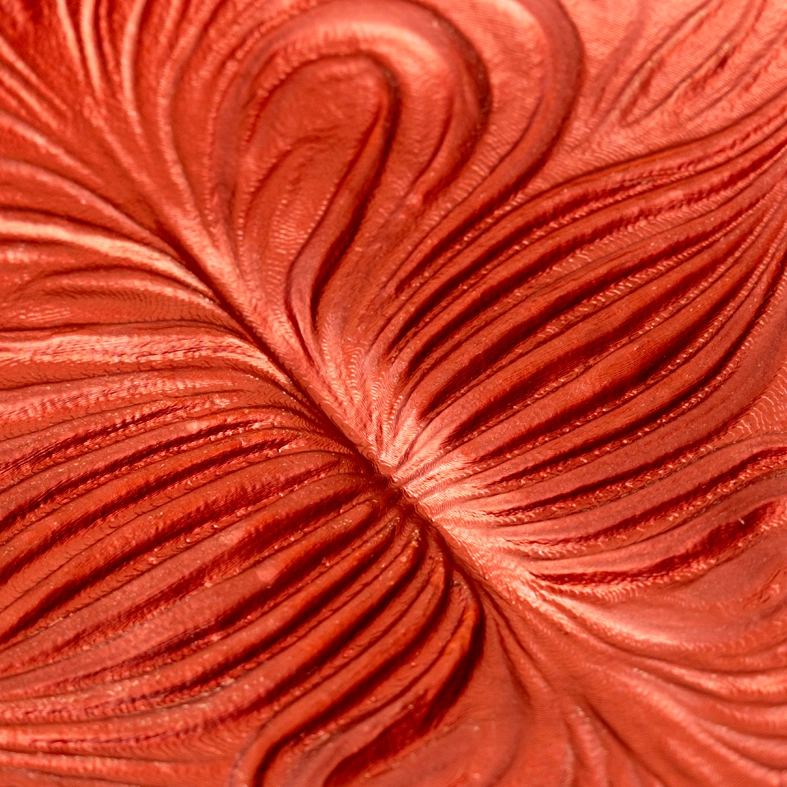Mycelium, the vegetative part of fungi, grows by digesting organic material including low-cost agricultural waste streams (such as cotton, corn, wheat, hemp, and flax residues), and is being increasingly used to replace petroleum-based plastics, particularly in packaging and insulation. Fast growing, with minimal energy and water needs combined with unique aesthetic qualities mycelium offers the potential to improve the lifecycle impacts of products.
Some pioneering organisations are also investigating how this abundant resource can be used to make consumer goods. For example, Mogu offers a range of acoustic panels made from mycelium. Mycelium is also increasingly used to produce leather-like materials.
Ecovative offer mycelium hides that ‘are 100% vegan, with naturally high tensile strength, tear resistance, durability, and other traits that are equal to animal leathers. Mycoworks offers a range of mycelium-based fabrics that have already been adopted by leading fashion brands including Hermes who incorporated the material into one of their bags. The company recently announced a collaboration with Cadillac to develop high-end materials suitable for use in their vehicles.
Neffa has also developed a range of mycelium-based fabrics including Mycotex, a leather-type material with a unique aesthetic (pictured). Originally developed by Aniela Hoitink Neffa, it further exploits the potential of mycelium by growing materials to the shapes required, eliminating the waste created by cutting patterns from traditional flat sheets,
There are tens of thousands of species of fungi, to date only a handful of which have been the focus of intensive research by academics or industry. These early pioneering projects demonstrate some of the potential for this resource to replace both plastics and leather across a wide range of consumer applications.
